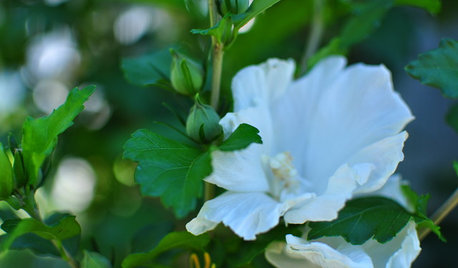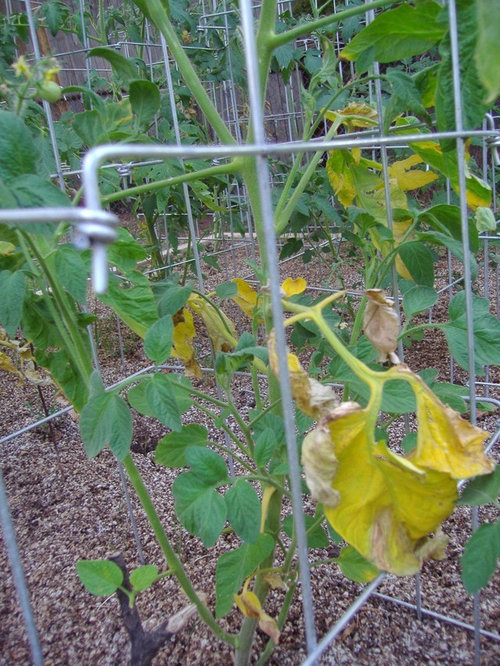Revisiting the yellow tomato leaves...with pictures!
shankins123
10 years ago
Related Stories

EDIBLE GARDENSSummer Crops: How to Grow Tomatoes
Plant tomato seedlings in spring for one of the best tastes of summer, fresh from your backyard
Full Story
SHOP HOUZZShop Houzz: Brighten Up Your Kitchen With Yellow
Enliven your kitchen with these Houzz finds that are sure to leave you sunny side up
Full Story
COLORWelcome Yellow Around Your Home for an Instant Lift
Keep on the sunny side with shades of yellow from buttery and soft to dynamic and bright
Full Story
HOUZZ TOURSHouzz Tour: A Photographer's Picture-Perfect Home Comes Into Focus
An ultramodern house in the Hollywood Hills is a study in contrasts: curvy and boxy, forward thinking and retro
Full Story
FARM YOUR YARDHouzz Call: Home Farmers, Show Us Your Edible Gardens
We want to see where your tomatoes, summer squashes and beautiful berries are growing this summer
Full Story
MOST POPULARRethinking Beige in a World Gone Gray
Gray, the ‘it’ neutral of recent years, has left beige in the shade. But is it time to revisit this easy-on-the-eyes wall color?
Full Story
GARDENING GUIDESMid-Atlantic Gardener's August Checklist
Bring in the bounty of tomatoes, savor the show of grasses and start seeding some cool-season plants
Full Story
SUMMER GARDENINGHouzz Call: Please Show Us Your Summer Garden!
Share pictures of your home and yard this summer — we’d love to feature them in an upcoming story
Full Story
FUN HOUZZHouzz Quiz: What Color Should Your Front Door Be?
Think you’re hip enough for orange? Or optimistic enough for yellow? Take our front-door personality quiz and find out
Full Story
MOST POPULARHomeowners Give the Pink Sink Some Love
When it comes to pastel sinks in a vintage bath, some people love ’em and leave ’em. Would you?
Full StorySponsored
Columbus Design-Build, Kitchen & Bath Remodeling, Historic Renovations
More Discussions



ScottOkieman
Okiedawn OK Zone 7
Related Professionals
Kyle Landscape Architects & Landscape Designers · Paradise Landscape Architects & Landscape Designers · Hartford Landscape Contractors · Boca Raton Landscape Contractors · Federal Way Landscape Contractors · Haverhill Landscape Contractors · Huntington Landscape Contractors · Waltham Landscape Contractors · Norridge Landscape Contractors · Boise Decks, Patios & Outdoor Enclosures · Dayton Decks, Patios & Outdoor Enclosures · Honolulu Decks, Patios & Outdoor Enclosures · Jackson Decks, Patios & Outdoor Enclosures · Pittsburgh Decks, Patios & Outdoor Enclosures · Salem Decks, Patios & Outdoor EnclosuresMiaOKC
shankins123Original Author
Okiedawn OK Zone 7
shankins123Original Author